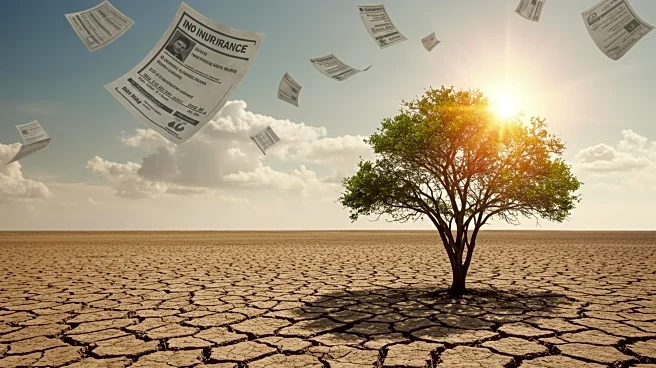What's Happening?
The UK has experienced its warmest spring on record, leading to a significant increase in subsidence claims. According to the ABI's H1 2025 subsidence claims data, insurance payouts for subsidence damage totaled £153 million, with 9,000 claims successfully lodged. The average payout per claim was £17,264. Subsidence, caused by the shrinkage of ground under dry conditions, poses a greater risk during extended periods of dry, warm weather. The ABI advises homeowners to watch for early warning signs such as ripped wallpaper and sticking windows or doors, and to seek immediate attention for cracks greater than 3mm wide.
Why It's Important?
The increase in subsidence claims highlights the growing impact of climate change on property insurance. Areas with clay-rich soils are particularly vulnerable to subsidence due to their tendency to sink and swell with changing moisture levels. Homeowners can mitigate risks by managing nearby trees and shrubs and maintaining gutters, pipes, and plumbing to prevent leaks. The rise in subsidence claims underscores the need for homeowners to be vigilant and proactive in protecting their properties against climate-related damage.
What's Next?
Homeowners are encouraged to contact their insurers promptly if they suspect subsidence damage, as home insurance is designed to cover such incidents. The insurance industry may need to adapt its risk assessment and pricing models to account for the increasing frequency and severity of climate-related events. As climate change continues to affect weather patterns, insurers and policymakers will need to collaborate on strategies to manage and mitigate risks associated with subsidence and other climate impacts.













